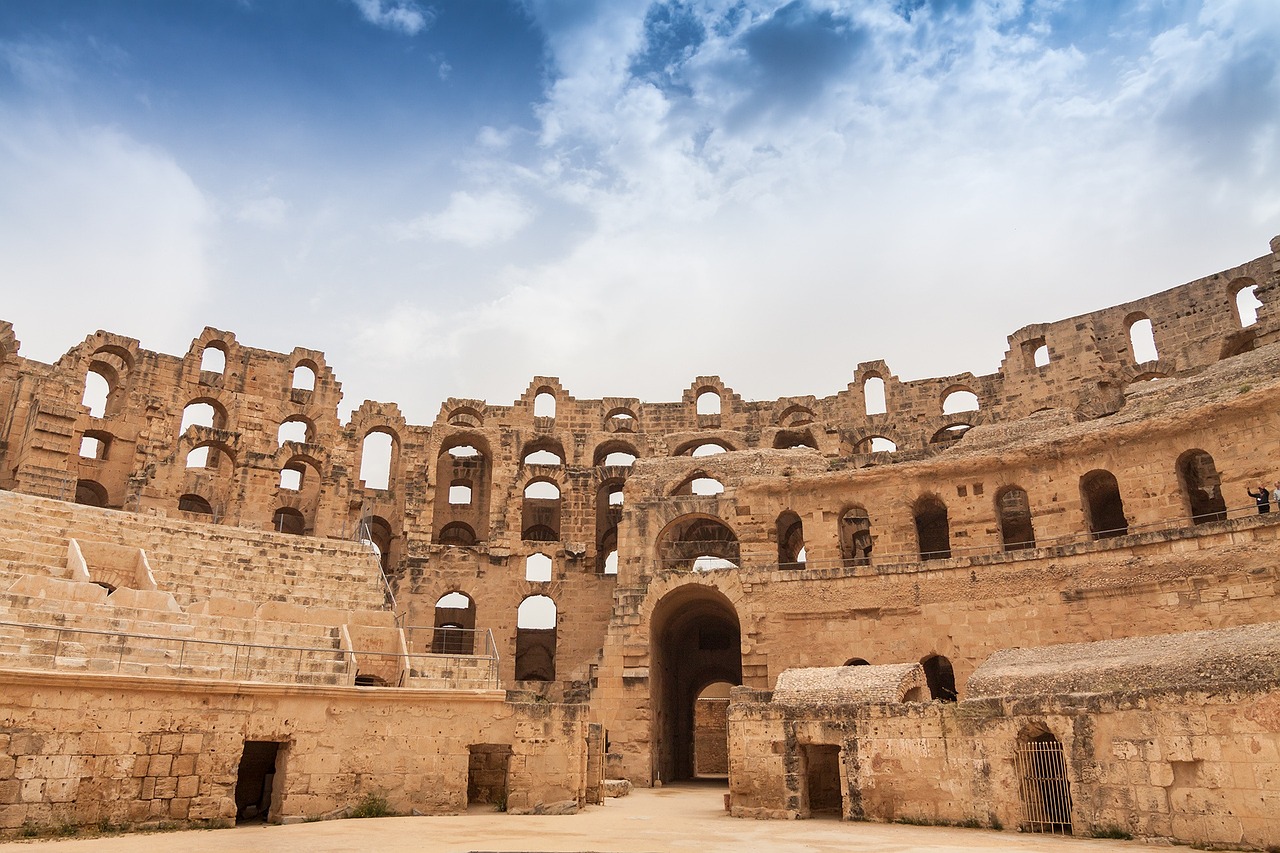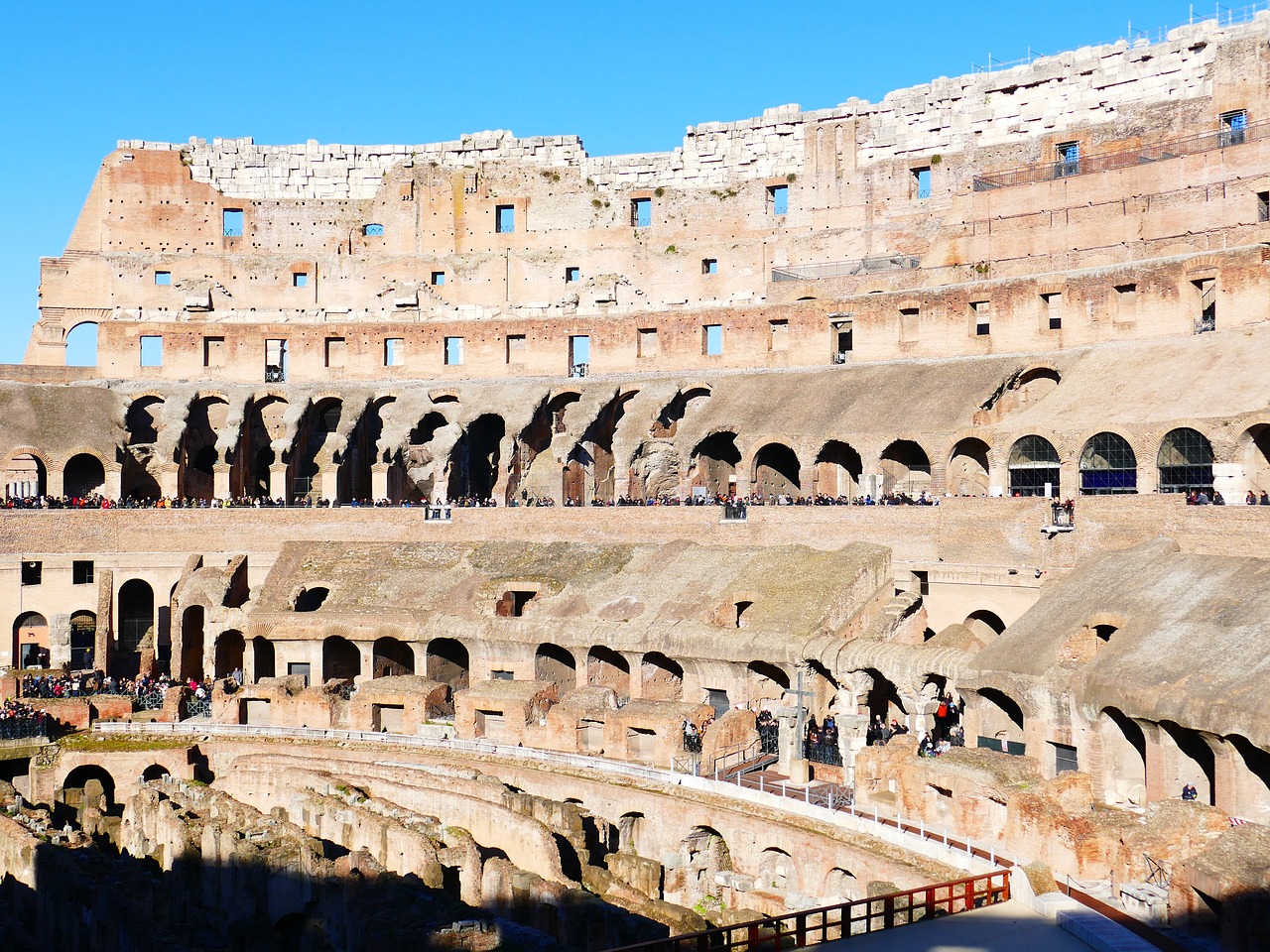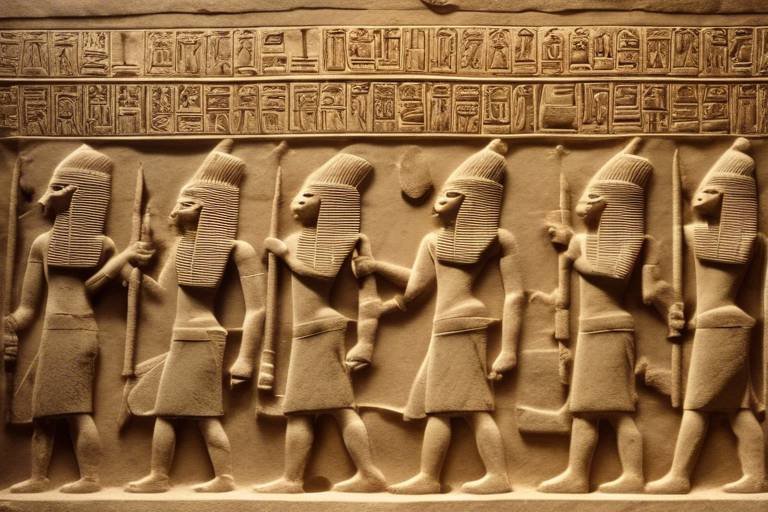The Decline of the Byzantine Empire - A Detailed Analysis
Throughout history, the Byzantine Empire stood as a symbol of power, wealth, and cultural richness. However, its decline was not a sudden event but a complex process influenced by various internal and external factors. Exploring the reasons behind the fall of this once mighty civilization reveals a tapestry of challenges that ultimately led to its demise.
Internal strife and political instability plagued the Byzantine Empire, weakening its central authority and paving the way for external threats. Power struggles, succession crises, and civil wars eroded the empire's unity, making it vulnerable to conquest and rebellion. The lack of a strong leadership structure exacerbated these issues, hastening the empire's decline.
External invasions and military defeats further exacerbated the Byzantine Empire's troubles. Invasions by the Seljuk Turks, Bulgars, and Normans tested the empire's military strength and territorial integrity. The relentless attacks from multiple fronts stretched the empire's resources thin, making it difficult to defend its vast territories effectively.
Economic challenges and financial strain added another layer of complexity to the Byzantine Empire's decline. Economic mismanagement, corruption, and the loss of key trade routes weakened the empire's financial stability. The inability to generate sufficient revenue to sustain its operations and support its military efforts left the empire vulnerable to collapse.
Religious schisms and cultural decline also played a significant role in the Byzantine Empire's downfall. The Great Schism between the Eastern Orthodox and Roman Catholic churches divided the empire's religious and cultural identity, weakening its unity and influence. The loss of cultural cohesion further destabilized the empire, making it easier for external forces to exploit its vulnerabilities.
The Crusades and Byzantine relations with the West added another layer of complexity to the empire's decline. Strained alliances, territorial losses, and the erosion of Byzantium's power in the region further weakened its position on the world stage. The empire's inability to navigate the complex political landscape of the Crusades hastened its decline and eventual fall.
Technological stagnation and military innovation also played a role in the Byzantine Empire's decline. The empire's failure to adapt to new military technologies and tactics compared to its adversaries put it at a significant disadvantage on the battlefield. The lack of innovation in military strategy and technology further weakened the empire's ability to defend itself effectively.
Social unrest and population decline added to the Byzantine Empire's challenges, further destabilizing its society and governance. Peasant uprisings, demographic shifts, and internal conflicts strained the empire's social fabric, making it difficult to maintain order and stability. The declining population also impacted the empire's ability to sustain its economy and military forces.
The legacy of the Byzantine Empire's decline continues to shape the course of European history. The rise of the Ottoman Empire, the preservation of Byzantine culture and heritage, and the lasting impact on the region's political landscape are all consequences of the empire's fall. Understanding the factors that led to the decline of the Byzantine Empire provides valuable insights into the complexities of power, governance, and cultural influence in the ancient world.

Internal Strife and Political Instability
Exploring the factors that led to the fall of the Byzantine Empire, including internal strife, external invasions, economic challenges, and the impact of the Crusades on this once powerful civilization.
During its later years, the Byzantine Empire faced significant internal strife and political instability that ultimately contributed to its downfall. Power struggles among the aristocracy, succession crises following the death of emperors, and frequent civil wars all weakened the central authority of the empire. Imagine a grand palace with corridors echoing with whispers of betrayal and plots, each faction vying for control like pieces on a chessboard.
These internal conflicts not only drained the empire's resources but also created a climate of uncertainty and distrust within the ruling elite. The constant struggle for power diverted attention from external threats and left the empire vulnerable to opportunistic invaders. It was like a mighty fortress with its gates left unguarded, inviting enemies to breach its walls.
The lack of a stable succession mechanism further exacerbated the situation, leading to frequent changes in leadership and a lack of continuity in governance. This instability weakened the empire's ability to respond effectively to external challenges, making it increasingly susceptible to outside forces seeking to exploit its vulnerabilities.
Moreover, the fragmentation of power among competing factions hindered decision-making processes and coordination of military efforts, further undermining the empire's ability to defend its territories. It was a time of chaos and uncertainty, where loyalty was a rare commodity and betrayal lurked around every corner.
In the end, the internal strife and political instability that plagued the Byzantine Empire sapped its strength and resilience, hastening its decline and eventual collapse. The once-mighty empire, renowned for its wealth and power, crumbled under the weight of its own internal conflicts, leaving behind a legacy of missed opportunities and shattered dreams.

External Invasions and Military Defeats
Exploring the factors that led to the fall of the Byzantine Empire, including internal strife, external invasions, economic challenges, and the impact of the Crusades on this once powerful civilization.
Examining how power struggles, succession crises, and civil wars weakened the Byzantine Empire's central authority, contributing to its eventual downfall.
Throughout its history, the Byzantine Empire faced relentless external invasions and military defeats that significantly impacted its territorial integrity and military strength. The Seljuk Turks, Bulgars, and Normans were among the formidable forces that posed serious threats to the Byzantine Empire's stability and security. These invasions not only weakened the empire's defenses but also drained its resources and manpower, making it increasingly vulnerable to further attacks.
Analyzing how economic mismanagement, corruption, and loss of key trade routes affected the Byzantine Empire's financial stability and ability to sustain its vast empire.
Exploring the role of religious controversies, such as the Great Schism between the Eastern Orthodox and Roman Catholic churches, in weakening the Byzantine Empire's cultural unity and influence.
Investigating the impact of the Crusades on the Byzantine Empire, including strained alliances, territorial losses, and the erosion of Byzantium's power in the region.
Examining how the Byzantine Empire's failure to adapt to new military technologies and tactics, compared to its adversaries, contributed to its military decline.
Discussing the effects of social unrest, including peasant uprisings and demographic shifts, on the Byzantine Empire's ability to maintain social cohesion and stability.
Reflecting on the lasting impact of the Byzantine Empire's decline on the course of European history, the rise of the Ottoman Empire, and the preservation of Byzantine culture and heritage.

Economic Challenges and Financial Strain
The Byzantine Empire faced significant economic challenges and financial strain that played a crucial role in its decline. The mismanagement of resources, rampant corruption, and the loss of key trade routes all contributed to the empire's financial instability. The once-thriving economy of Byzantium suffered greatly, impacting its ability to sustain its vast territories and military campaigns.
One of the major economic challenges was the decline in trade due to the loss of secure trade routes. The disruption of trade with the East and the rise of competing trade powers in the Mediterranean weakened Byzantium's economic foundation. This loss of trade revenue further strained the empire's finances, making it difficult to fund essential services and maintain its military.
Moreover, the heavy taxation imposed on the population to support the empire's expansive bureaucracy and military campaigns led to widespread discontent among the citizens. The burden of taxation, coupled with economic hardships, fueled social unrest and weakened the empire's internal cohesion.
Additionally, the Byzantine Empire struggled to adapt to the changing economic landscape of the medieval world. While other powers embraced new economic practices and technologies, Byzantium remained stagnant, failing to innovate and diversify its economy. This lack of adaptation left the empire vulnerable to economic shocks and further exacerbated its financial strain.
Furthermore, the empire's financial woes were compounded by the constant need to defend its borders against external threats. Military expenditures drained the treasury, leaving little resources for economic development and infrastructure projects. The reliance on a costly military defense further deepened Byzantium's financial crisis.
In conclusion, the economic challenges and financial strain faced by the Byzantine Empire were significant factors in its decline. The empire's inability to address these issues effectively weakened its overall stability and contributed to its eventual downfall.

Religious Schisms and Cultural Decline
Exploring the factors that led to the fall of the Byzantine Empire, including internal strife, external invasions, economic challenges, and the impact of the Crusades on this once powerful civilization.
Examining how power struggles, succession crises, and civil wars weakened the Byzantine Empire's central authority, contributing to its eventual downfall.
Discussing the impact of invasions by various forces such as the Seljuk Turks, Bulgars, and Normans on the Byzantine Empire's territorial integrity and military strength.
Analyzing how economic mismanagement, corruption, and loss of key trade routes affected the Byzantine Empire's financial stability and ability to sustain its vast empire.
Exploring the role of religious controversies, such as the Great Schism between the Eastern Orthodox and Roman Catholic churches, in weakening the Byzantine Empire's cultural unity and influence.
Investigating the impact of the Crusades on the Byzantine Empire, including strained alliances, territorial losses, and the erosion of Byzantium's power in the region.
Examining how the Byzantine Empire's failure to adapt to new military technologies and tactics, compared to its adversaries, contributed to its military decline.
Discussing the effects of social unrest, including peasant uprisings and demographic shifts, on the Byzantine Empire's ability to maintain social cohesion and stability.
Reflecting on the lasting impact of the Byzantine Empire's decline on the course of European history, the rise of the Ottoman Empire, and the preservation of Byzantine culture and heritage.
The Byzantine Empire faced significant challenges due to religious schisms and cultural decline. The Great Schism between the Eastern Orthodox and Roman Catholic churches deeply divided the empire, weakening its cultural unity and influence. This religious conflict not only fractured the population but also created tensions that hindered the empire's ability to respond effectively to external threats.

The Crusades and Byzantine Relations with the West
The Crusades marked a tumultuous period in Byzantine history, significantly impacting the empire's relations with the Western powers. Initially viewed as a means to aid the Byzantines against Muslim forces, the Crusades soon turned into a double-edged sword for the Byzantine Empire. While some Crusades provided temporary relief by diverting attention from Byzantine territories, others led to strained alliances and territorial losses.
The Fourth Crusade, in particular, stands out as a pivotal moment in Byzantine-Western relations. Instead of aiding the Byzantines, the Crusaders sacked Constantinople in 1204, causing irreparable damage to the Byzantine Empire. This event not only weakened Byzantium but also paved the way for the rise of the Latin Empire in the former Byzantine territories.
Furthermore, the Crusades exacerbated existing tensions between the Eastern Orthodox Church and the Roman Catholic Church. Religious differences, coupled with political ambitions, strained relations between the Byzantine Empire and its Western counterparts. The Great Schism of 1054, which divided the Christian world into Eastern and Western branches, further complicated Byzantine-Western interactions during the Crusades.
Despite occasional cooperation and alliances, the Byzantine Empire's relationship with the West during the Crusades was fraught with challenges. The crusading fervor often clashed with Byzantine interests, leading to conflicting agendas and power struggles. The erosion of Byzantine power and influence in the region due to the Crusades set the stage for the empire's eventual decline and fall.

Technological Stagnation and Military Innovation
Exploring the factors that led to the fall of the Byzantine Empire, including internal strife, external invasions, economic challenges, and the impact of the Crusades on this once powerful civilization.
Examining how power struggles, succession crises, and civil wars weakened the Byzantine Empire's central authority, contributing to its eventual downfall.
Discussing the impact of invasions by various forces such as the Seljuk Turks, Bulgars, and Normans on the Byzantine Empire's territorial integrity and military strength.
Analyzing how economic mismanagement, corruption, and loss of key trade routes affected the Byzantine Empire's financial stability and ability to sustain its vast empire.
Exploring the role of religious controversies, such as the Great Schism between the Eastern Orthodox and Roman Catholic churches, in weakening the Byzantine Empire's cultural unity and influence.
Investigating the impact of the Crusades on the Byzantine Empire, including strained alliances, territorial losses, and the erosion of Byzantium's power in the region.
Examining how the Byzantine Empire's failure to adapt to new military technologies and tactics, compared to its adversaries, contributed to its military decline.
Discussing the effects of social unrest, including peasant uprisings and demographic shifts, on the Byzantine Empire's ability to maintain social cohesion and stability.
Reflecting on the lasting impact of the Byzantine Empire's decline on the course of European history, the rise of the Ottoman Empire, and the preservation of Byzantine culture and heritage.
Stay tuned for answers to common questions about the Byzantine Empire's decline, its historical significance, and the aftermath of its fall.

Social Unrest and Population Decline
Social unrest and population decline played significant roles in the weakening of the Byzantine Empire. The empire faced internal turmoil as peasant uprisings, revolts, and discontent among the lower classes grew. The gap between the wealthy elite and the impoverished population widened, leading to social tensions that destabilized the empire's social fabric.
Furthermore, the population decline in key regions of the Byzantine Empire had detrimental effects on its economy and military strength. Wars, plagues, and famines contributed to a decrease in the population, resulting in labor shortages, reduced tax revenues, and a weakened defense capability.
The decline in population also impacted the empire's ability to maintain its vast territories and defend against external threats. With fewer people available for military service and agricultural production, the Byzantine Empire struggled to sustain its power and influence in the face of growing challenges.
Efforts to address social unrest and population decline were hindered by the empire's political instability and economic troubles. The inability to effectively govern and provide for its people further exacerbated the internal strife and demographic challenges facing the Byzantine Empire.
In conclusion, social unrest and population decline were crucial factors that contributed to the gradual decline and eventual fall of the once mighty Byzantine Empire. The empire's inability to address these issues effectively weakened its foundations and paved the way for its eventual collapse.

Legacy of the Byzantine Empire's Decline
As the Byzantine Empire faced its decline, its legacy left a profound impact on the course of European history and the wider world. The fall of Constantinople in 1453 to the Ottoman Empire marked the end of an era and the beginning of a new chapter in history. The legacy of the Byzantine Empire's decline can be seen in several key aspects:
Cultural Influence: Despite its fall, the Byzantine Empire's cultural influence endured through the preservation and dissemination of ancient Greek and Roman knowledge. Byzantine scholars played a crucial role in transmitting classical texts to the West, laying the foundation for the Renaissance.
Religious Legacy: The Great Schism between the Eastern Orthodox and Roman Catholic churches not only weakened the Byzantine Empire but also shaped the religious landscape of Europe. The legacy of this schism continues to influence the relationship between Eastern and Western Christianity to this day.
Architectural Marvels: The Byzantine Empire's architectural achievements, such as the Hagia Sophia in Constantinople, stand as a testament to its grandeur and engineering prowess. These structures continue to inspire awe and admiration, showcasing the empire's enduring legacy in the field of architecture.
Political Impact: The decline of the Byzantine Empire paved the way for the rise of the Ottoman Empire, which would go on to dominate the region for centuries. The fall of Constantinople had far-reaching geopolitical consequences, reshaping the balance of power in the Mediterranean and beyond.
Cultural Heritage: Despite its decline, the Byzantine Empire's cultural heritage lives on in the traditions, art, and literature of modern-day Greece, Turkey, and other regions that were once part of the empire. The legacy of Byzantium continues to fascinate scholars and enthusiasts, preserving its memory for future generations.
Frequently Asked Questions
- What were the main reasons for the decline of the Byzantine Empire?
The decline of the Byzantine Empire can be attributed to a combination of internal strife, external invasions, economic challenges, religious schisms, and military stagnation. These factors collectively weakened the empire's political, military, and economic foundations, ultimately leading to its downfall.
- How did internal strife contribute to the Byzantine Empire's decline?
Internal strife, including power struggles, succession crises, and civil wars, undermined the Byzantine Empire's central authority and stability. This weakened the empire's ability to govern effectively and respond to external threats, hastening its decline over time.
- What role did external invasions play in the fall of the Byzantine Empire?
External invasions by various forces, such as the Seljuk Turks, Bulgars, and Normans, posed significant challenges to the Byzantine Empire's territorial integrity and military strength. These invasions put immense pressure on the empire's defenses and resources, contributing to its ultimate collapse.
- How did economic challenges impact the Byzantine Empire's decline?
Economic mismanagement, corruption, and the loss of key trade routes all contributed to the financial strain experienced by the Byzantine Empire. These challenges weakened the empire's economic foundation, making it difficult to sustain its vast territories and military operations.
- What was the legacy of the Byzantine Empire's decline?
The decline of the Byzantine Empire had a lasting impact on European history, paving the way for the rise of the Ottoman Empire and influencing the course of Byzantine culture and heritage. The empire's fall marked a significant turning point in the region's geopolitical landscape.



















